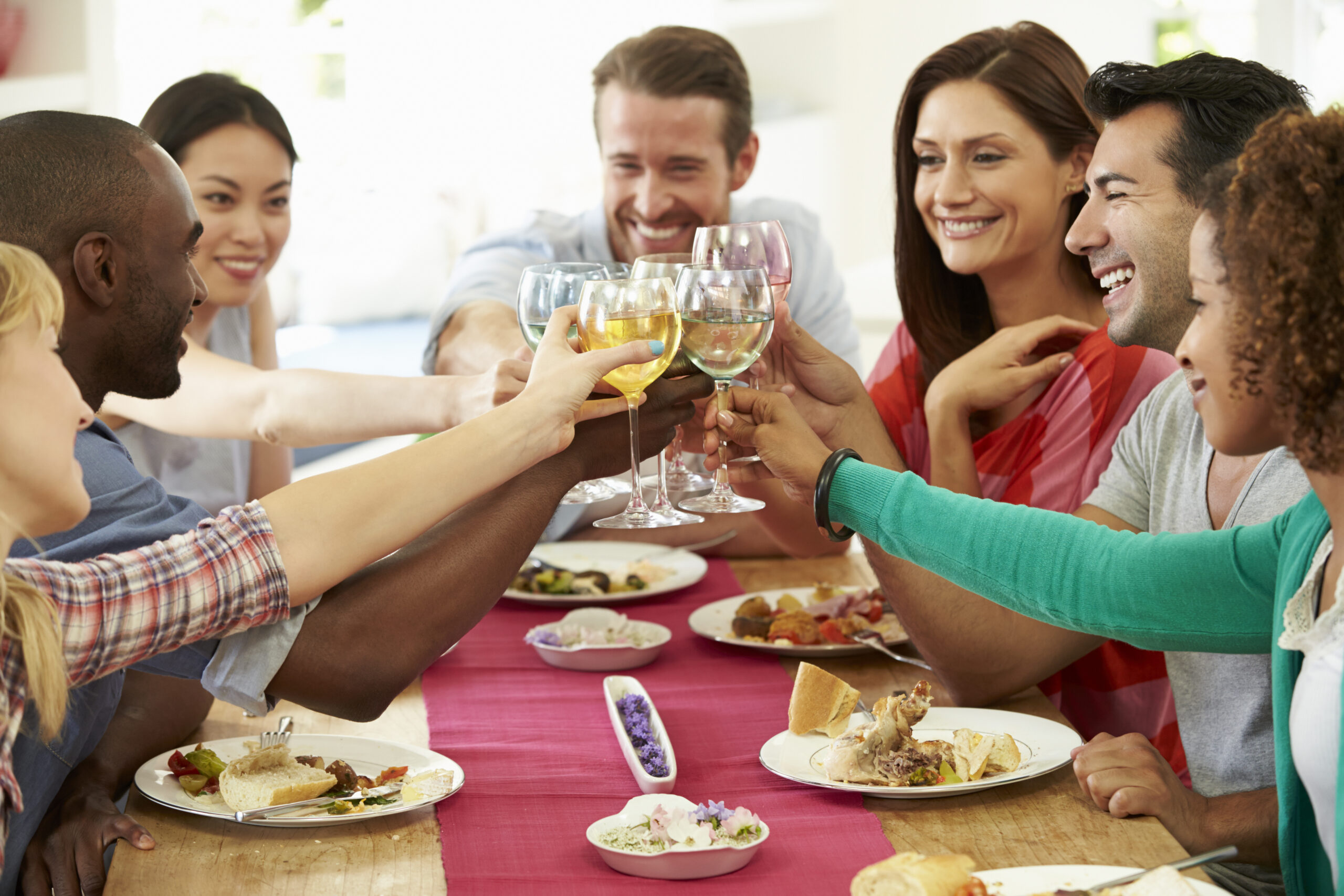Have you ever found yourself wondering how much food you should prepare for your guests? Whether you’re planning a cozy dinner party or a large gathering, it’s essential to get the quantities right to avoid wastage or leaving your guests unsatisfied.
In this article, we will explore some helpful tips and guidelines to determine just how much food you should have on hand to ensure a successful and enjoyable event for everyone. So, let’s jump right in and find out the perfect dinner party portion sizes to make your guests’ taste buds sing with delight!
Determining the Quantity of Food
Calculating the Number of Guests
When it comes to determining the quantity of food you need to prepare for an event, the first step is to calculate the number of guests. Whether you are hosting a small gathering or a large celebration, knowing the exact number of people attending is crucial. This will help you plan the menu and estimate the amount of food required to satisfy everyone’s appetite.
Consideration of Guest Preferences
Once you have the total number of guests, it’s important to consider their preferences. Are they meat lovers or vegetarians? Do they have any dietary restrictions or allergies? Taking into account the preferences and special requirements of your guests will ensure that you provide a variety of options that cater to everyone’s needs.
Different Types of Events
The type of event you are hosting also plays a significant role in determining the quantity of food needed. For example, a casual backyard BBQ will require different quantities compared to a formal sit-down dinner. Consider the nature of your event and adjust the quantity accordingly.
Duration of the Event
Another factor to consider is the duration of the event. If it’s a short event, such as a cocktail party or a business meeting, you may need fewer servings per person. However, for longer events like weddings or conferences, you should account for additional servings to keep your guests satisfied throughout the duration of the event.
Meal Timing
The timing of your event can also influence the quantity of food required. For events that fall during regular meal times, guests may expect a more substantial meal. On the other hand, if your event is scheduled during an off-peak time, such as mid-morning or late evening, you can plan for lighter offerings or focus on appetizers and finger foods.
Factors Influencing Food Consumption
Gender and Age
When determining the quantity of food, it’s important to consider factors such as gender and age. On average, men tend to eat more than women, and older adults often have smaller appetites compared to younger ones. Keeping gender and age in mind will help you estimate the appropriate portion sizes.
Appetite and Dietary Restrictions
Guests’ individual appetites and dietary restrictions can greatly influence their food consumption. Some individuals may have larger appetites and will eat more, while others may have dietary restrictions that limit their food choices. When in doubt, it’s always better to err on the side of providing a little extra food to ensure everyone is well-fed and satisfied.
Cultural and Regional Differences
Culture and regional differences can also impact food consumption. Certain cultures may have specific traditions or customs that affect the quantity and types of food that are expected. It’s important to be mindful of these differences and incorporate them into your planning process to ensure that your guests feel comfortable and catered to.
Season and Weather Conditions
The season and weather conditions can also influence appetite and food consumption. In hotter climates, guests may opt for lighter and refreshing foods, while in colder weather, heartier options might be preferred. Take into account the seasonal context of your event and tailor your menu accordingly.
Food Quantity Guidelines for Various Categories
Appetizers
When it comes to appetizers, a good rule of thumb is to plan for about 4-6 bites per person per hour. However, this can vary depending on the type of appetizer. For small bites or finger foods, plan for 6-8 pieces per person, whereas for more substantial appetizers, like sliders or bruschetta, aim for 2-3 pieces per person.
Main Course
The main course is often the centerpiece of a meal, so it’s essential to plan accordingly. For plated meals, aim for 6-8 ounces of protein per person. If you’re serving a buffet-style meal, plan for 4-6 ounces of protein per person. Additionally, provide a variety of side dishes to complement the main course and ensure that everyone’s preferences are catered to.
Side Dishes
Side dishes are an opportunity to showcase different flavors and add variety to your menu. Plan for around 4-6 ounces of side dishes per person, and include a mix of starches, vegetables, and salads. It’s always a good idea to have a few vegetarian options available to accommodate different dietary preferences.
Beverages
When it comes to beverages, make sure to provide a variety of options to suit different tastes. Plan for at least one non-alcoholic drink per person per hour, and for alcoholic beverages, estimate about 1-2 drinks per person for the first hour, and 1 drink per person for each subsequent hour.
Desserts
Desserts are a sweet ending to any meal and should be planned accordingly. Aim for around 1-2 portions of dessert per person, depending on the type of dessert and the overall size of the servings. For miniature desserts or bite-sized treats, plan for 2-3 pieces per person.
Late-Night Snacks
If your event will extend late into the night, consider offering some late-night snacks to keep your guests energized. Plan for around 2-3 light snacks per person, such as mini sandwiches, sliders, or finger foods.
Tips for Avoiding Food Waste
Plan a Precise Menu
One of the key strategies for avoiding food waste is to plan a precise menu. By carefully selecting the dishes you’ll serve, you can ensure that you don’t end up with excessive leftovers. Consider the preferences and dietary restrictions of your guests and tailor your menu accordingly.
Use a Catering Calculator
To determine the exact quantities of food needed, consider using a catering calculator. These online tools can help you estimate the amount of food based on the number of guests and the type of event you’re hosting. They take into account various factors such as appetites, portion sizes, and type of meal service to give you a more accurate estimation.
Request RSVPs
When sending out invitations for your event, be sure to request RSVPs. This will allow you to have a more accurate headcount and plan accordingly. Having a confirmed guest list will help minimize the risk of over or underestimating the quantity of food needed.
Consider Buffet-Style Service
Buffet-style service can be a great option to minimize food waste. By allowing guests to serve themselves, they can choose the quantity of food they desire, reducing the chances of excess leftovers. Make sure to provide clear signage and labels for the dishes, so guests can identify their options easily.
Offer Leftover Food Options
If you do end up with leftovers, consider providing guests with leftover food options. You can prepare small to-go containers or provide recipes and suggestions for repurposing the leftover food. This way, your guests can enjoy the food beyond the event, reducing waste and ensuring that nothing goes to waste.
Lets start planning!
Handling Dietary Restrictions
Common Dietary Restrictions
When planning your menu, it’s vital to take into consideration common dietary restrictions. The most common dietary restrictions include vegetarian, vegan, gluten-free, and dairy-free preferences. Make sure to label the dishes clearly, so guests can easily identify which options suit their dietary needs.
Vegetarian and Vegan Dinner Party Options
Including vegetarian and vegan options is becoming increasingly important as more people adopt these diets. Ensure that you have at least a few vegetarian and vegan dishes available, such as vegetable skewers, salads, or plant-based protein alternatives. This will allow your guests to enjoy a variety of options, regardless of their dietary preferences.
Gluten-free and Dairy-free Options
For guests with gluten or lactose intolerance, it’s essential to provide gluten-free and dairy-free options. This can include dishes like gluten-free bread, pasta alternatives, or dairy-free desserts. Offering these options will ensure that all guests can enjoy the event without worrying about their dietary restrictions.
Allergies and Intolerances
Lastly, if any of your guests have specific allergies or intolerances, make sure to accommodate them. Ask guests to notify you in advance about any allergies or intolerances, and plan their meals accordingly. Take extra care to prevent cross-contamination during food preparation if necessary.
Additional Considerations
Dinner Party Budget Constraints
When planning the quantity of food, it’s important to keep budget constraints in mind. Consider the overall budget for your dinner party and determine an appropriate allocation for food and beverages. Balancing quality, variety, and affordability will allow you to provide a satisfying dining experience within your budget.
Cooking Experience
Your cooking experience and skill level also play a role in determining the quantity of food. If you’re a seasoned cook, a dinner party, may feel more comfortable preparing complex dishes in larger quantities. However, if you’re less experienced, it’s better to focus on simpler recipes and opt for smaller quantities to ensure successful preparation and avoid wastage.
Transportation and Storage
Consider the logistics of transportation and storage when planning the quantity of food. Ensure that you have adequate containers or trays to transport the food to the event venue, and make appropriate arrangements for refrigeration or heating if necessary. Properly storing the food before and during the event will help maintain its quality and safety.
Leftover Utilization
Lastly, consider how you can utilize any leftovers efficiently. Leftover food can be repurposed into new dishes, frozen for future consumption, or donated to local food banks or shelters. By planning ahead and having a plan for utilizing leftovers, you can minimize waste and make the most of your resources.
In conclusion, determining the quantity of food to prepare for an event requires careful consideration of factors such as the number of guests, their preferences and dietary restrictions, the type and duration of the event, and various cultural and regional influences.
By following food quantity guidelines for different categories, such as appetizers, main courses, side dishes, beverages, desserts, and late-night snacks, you can ensure that everyone is well-fed and satisfied.
Additionally, implementing tips for avoiding food waste, handling dietary restrictions, and considering additional factors like budget constraints, cooking experience, transportation, and storage will help you plan a successful and efficient event.
Remember, a well-prepared menu not only satisfies hunger but also creates a memorable dining experience for your guests.
Happy Cooking!


